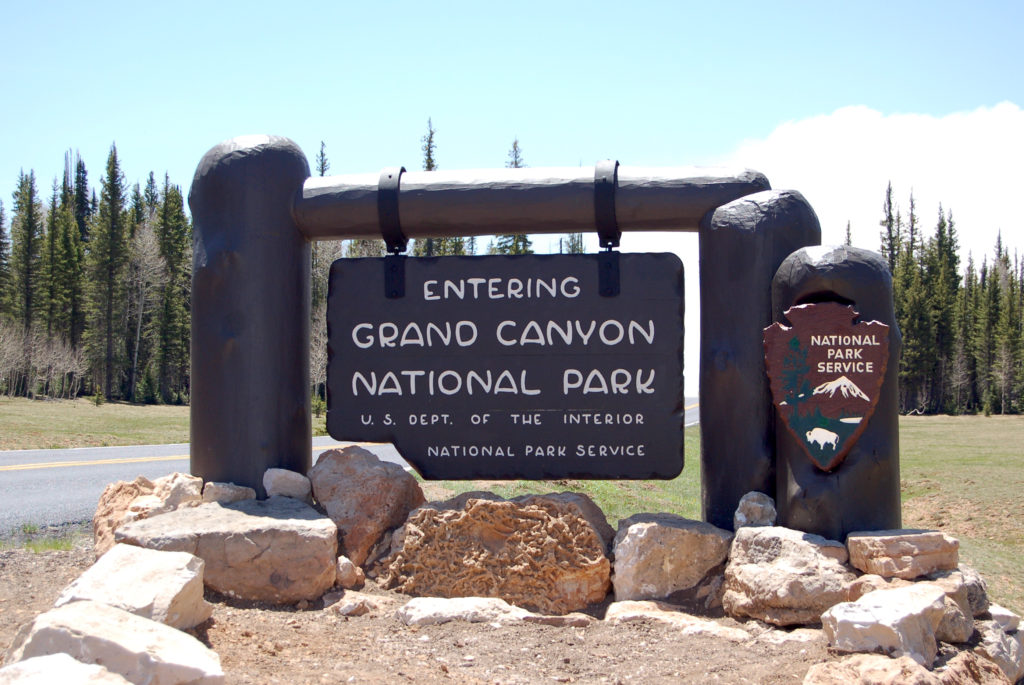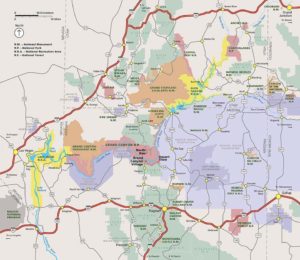
The Colorado River created the Grand Canyon. Geological evidence suggests that the river established its course more than five million years ago. As a formation the canyon itself predates the arrival of the river by nearly 65 million years. So why is Map Monday celebrating the 100th anniversary of something that’s millions of years old? Good Question.
Before answering, we need to dig a bit deeper (sorry about that). Archaeological evidence suggests a distinct Native American culture emerged in the Grand Canyon area more than 3,000 years ago. Native Americans built settlements within the canyon and its caves. Many others considered the canyon a holy site.
The first Europeans to ‘discover’ the Grand Canyon were members of Coronado expedition in 1541. They were unable to reach the river. The site barely gained mention in reports of the expedition. As a brief aside, the Grand Canyon was the first of the major North American national wonders ‘found’ by Europeans.
Other than a brief visit by Francisco Tomas Garce in 1776, there are no historical mentions of the Grand Canyon for several hundred years. In fact fur trappers and U.S. Army Corps of Engineers steered clear of the area. In 1857, Lt. Joseph Ives led an expedition into the canyon. In summary, he concluded the land had no value and that “after entering it there is nothing to do but leave.”
So what changed? According to the Smithsonian, the popularity of geology as a new science raised the profile of the Grand Canyon. At 6,093 feet (1,857 meters) deep, the canyon exposes nearly 2 billion years worth of geological history. Scenes of the vista in ink and paint by William Henry Holmes and Thomas Moran helped transform the region to a wonder. President Theodore Roosevelt declared the Grand Canyon an unparalleled natural wonder.
Now we’ve finally reached the answer to our question. On 26 February 1919 President Woodrow Wilson signed the congressional act designating the Grand Canyon as the nation’s 17th national park. Now you know.
Interesting Facts about the Grand Canyon and the National Park
The Grand Canyon is 277 miles (446 km) long and as wide as 18 miles (29 km).
In its first year 44,173 people visited the park, compared to nearly 6 million annual visitors last year.
Yarlung Tsangpo in Tibet is both deeper (17,567 feet) and longer (307 miles).
At 1,904 square miles the park is larger than Rhode Island (1,212 square miles).
While the canyon is full of fossils, none are dinosaurs. The youngest canyon rocks formed well before dinosaurs roamed the earth.
National Park Service Map of the Grand Canyon National Park and surrounding areas.
As always thanks for reading.
Armen
Note to pay the bills: Are you interested in a James Bond-like thriller in a fantasy setting? Check out a summary of the series here or find links to purchase books here.


